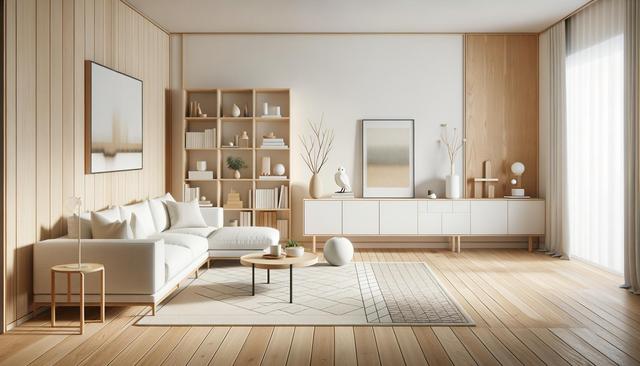Shifting Priorities in Living Room Design
The traditional living room, once centered around a fixed focal point such as a fireplace or television, is now a space transformed by shifting lifestyle priorities. Modern families and individuals are reimagining how they use this central area of the home. The rise of remote work, increased interest in wellness, and the desire for multipurpose functionality are key drivers behind these changes. No longer just for entertaining guests or watching TV, living rooms are becoming flexible environments that can easily transition from a workspace to a yoga studio or even a dining area. This new approach reflects a broader design philosophy: adaptability and personal relevance over rigid formality.
Instead of a one-size-fits-all layout, homeowners are now customizing living room configurations based on their daily routines. For example, someone who works from home might incorporate a stylish desk into a corner of the space, while someone who prioritizes entertainment might opt for modular seating that can be rearranged for movie nights or social gatherings. This evolution not only reflects changing functional needs but also a deeper desire for spaces that support well-being and productivity.
Furniture That Adapts to Evolving Layouts
As layouts evolve, so too must the furniture that fills these spaces. There is growing interest in modular, multi-use furniture that adapts to different purposes throughout the day. Sofas with movable sections, ottomans that double as storage units, or coffee tables that convert into work desks are increasingly popular as they provide versatility without sacrificing style. This trend supports the growing need for space efficiency, especially in urban environments where square footage may be limited.
Key features people are looking for in adaptable furniture include:
- Lightweight and easy-to-move pieces
- Storage options integrated into seating or tables
- Neutral color palettes that blend with multiple styles
- Durable materials suited for daily multi-functional use
These choices allow homeowners to create living rooms that reflect their daily needs without being locked into static design decisions. As a result, the layout becomes more fluid, and the space can transition seamlessly from one activity to another.
The Open-Concept Influence
Open-concept living has played a significant role in the evolution of living room layouts. As walls come down, the boundaries between kitchen, dining, and living areas blur, requiring more thoughtful planning to define zones within the open space. This change has made layout decisions more strategic, with elements like area rugs, lighting, and furniture orientation used to visually delineate different functions.
Some popular strategies to create defined zones within an open living area include:
- Using different lighting fixtures to set boundaries
- Arranging furniture to form natural walkways
- Incorporating shelving or screens for subtle separation
- Varying flooring materials or textures
These strategies help maintain functionality and flow, ensuring that the living room doesn’t lose its identity in a larger open space. It also allows for greater social interaction and connectivity, aligning with contemporary preferences for communal living and entertaining.
Technology’s Role in Shaping Layouts
Technology has become another major influence in the evolution of living room layouts. With smart home systems, wireless devices, and minimalistic tech design, the need for bulky entertainment centers is diminishing. Wall-mounted televisions, hidden cords, and sleek sound systems allow homeowners to maintain a clean aesthetic while still enjoying high-quality media experiences.
Additionally, the integration of smart lighting, voice-controlled assistants, and multi-room audio systems has led to living rooms that are not just comfortable, but also intelligently responsive. These advancements enable people to create mood settings for various activities, from movie nights to relaxation. As technology becomes more seamless and less intrusive, it supports open, uncluttered layouts that prioritize both function and ambiance.
Designers are also considering tech-free zones within the living room, a newer trend aiming to promote digital balance. By setting aside areas for reading, conversation, or mindfulness, the layout becomes not just more functional but also more intentional and aligned with wellness goals.
Personal Expression Through Layout Choices
The evolution of living room layouts also reflects a broader trend toward personal expression in home design. Rather than adhering to a fixed aesthetic or traditional setup, people are curating spaces that reflect their personalities, interests, and lifestyles. This has led to a more eclectic mix of design elements, from vintage furniture paired with modern art to bold color schemes that defy minimalism.
Living rooms are increasingly being seen as an extension of the self. Homeowners are choosing layouts that speak to how they live rather than how they think a room should look. Whether that means incorporating a reading nook, creating a mini-gallery wall, or setting up a cozy conversation pit, the options are wide open. As a result, no two living rooms are truly alike, and that diversity is what’s making this design shift so impactful.
Personalized layouts encourage creativity and ensure that the living room truly serves the people who use it. This shift is redefining what it means to ‘design’ a room—not as a static, stylistic decision, but as an ongoing, evolving process that adapts with time.
Conclusion: Designing for the Way We Live Today
Living room layouts are no longer confined to outdated conventions or singular uses. They’re evolving in exciting ways that reflect how we live, work, and unwind. The key to navigating this shift lies in flexibility, functionality, and personal meaning. Whether you’re working with a compact apartment or a spacious open-concept home, the goal is to create a layout that supports your lifestyle and adapts to your needs. By embracing these evolving trends, homeowners can design living rooms that are not only stylish but also deeply functional and uniquely theirs.






